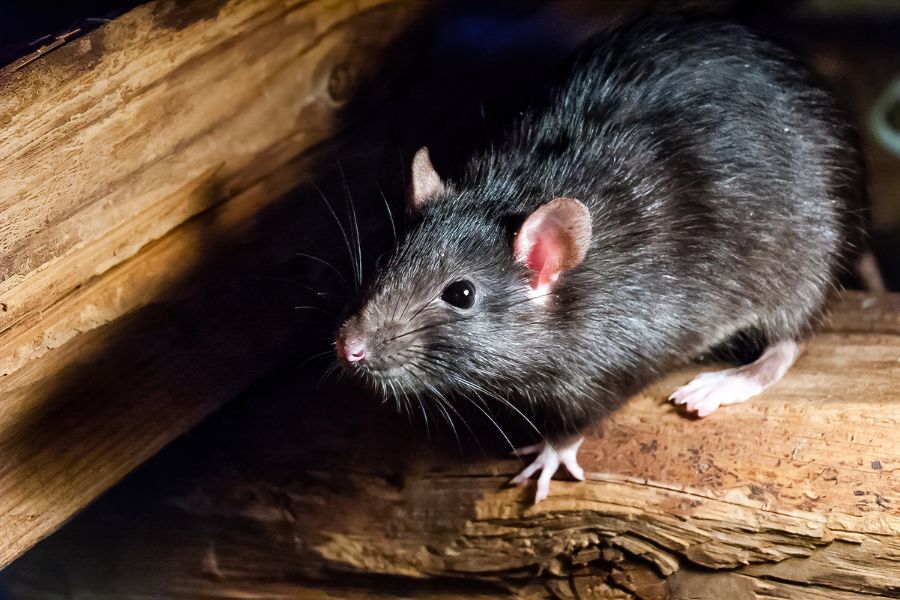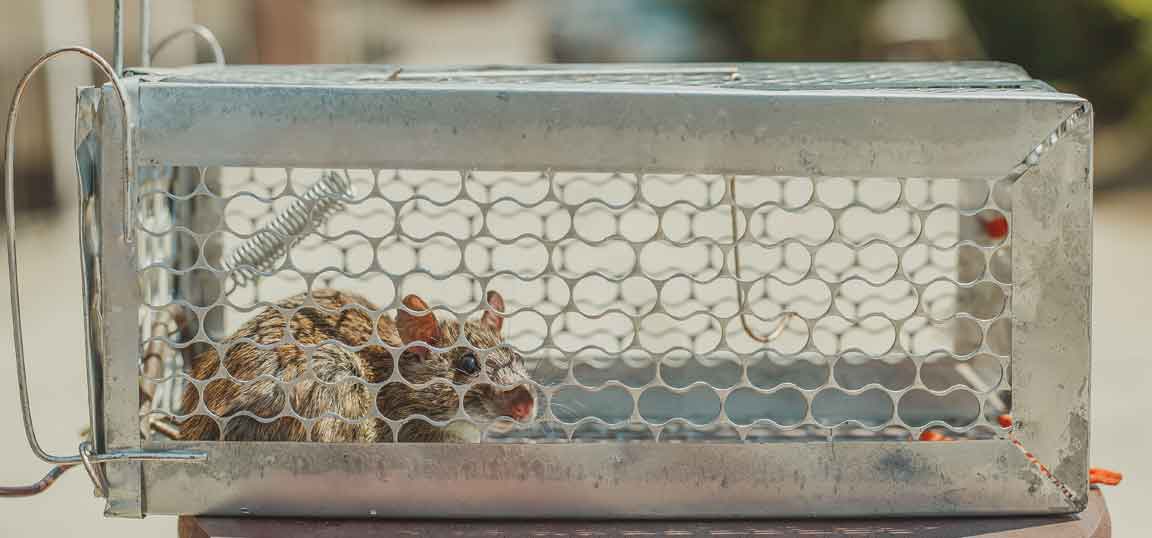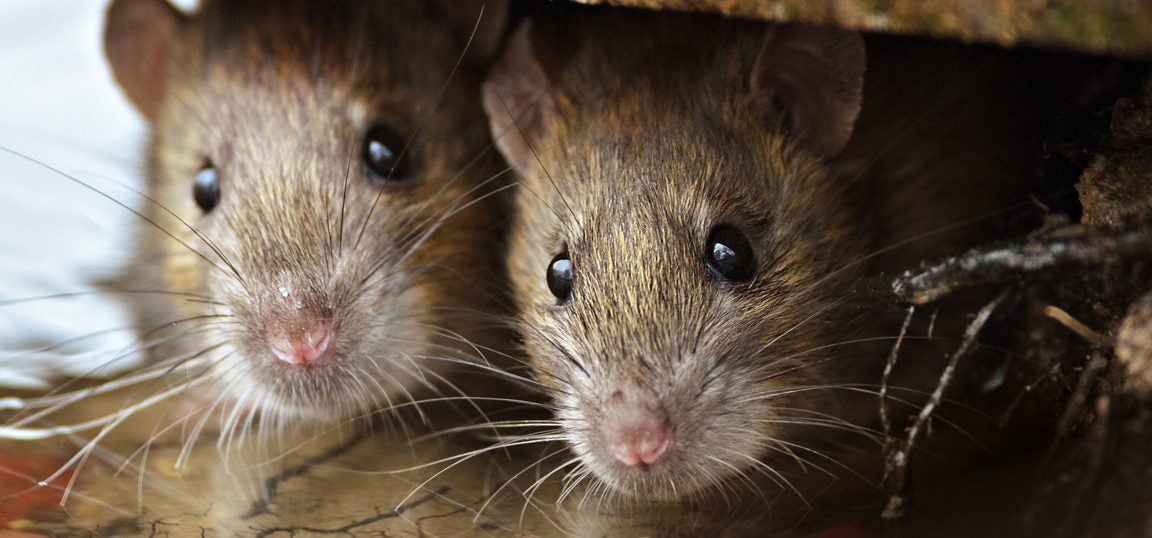Home maintenance advice
How to Deter Mice & Rats
12 Apr 2017 • 7 minutes


Mice and rats are not pests you want to see around the home, here’s how you can put them off stopping by.
Even if you have good standards of hygiene and proofing, infestations sometimes occur. If mice or rats have entered your home and are causing a problem, it will be necessary to remove them. It’s also worth putting preventative measures in place otherwise the underlying causes of an infestation will remain. Chances are that if there’s nothing for mice or rats to eat in and around your home, they’ll move on to greener pastures by themselves.

Telltale signs of mice or rats include small black droppings near food, scratching noises, signs of gnawing and sometimes a strong musky odour.
If you suspect a problem, identify where the mice or rats are living and feeding, as well as the routes they take between these areas (look for holes, droppings and footprints). Remember, a mouse or a rat can squeeze through a hole the size of a pen, so you may have to look carefully.
Whilst some councils offer a free service, there is generally a fee for pest control. A discount may be offered to those on a low income. You will need to make contact with the Environmental Health Department of your local council to report the problem and find out what applies in your area.
Having pets around, especially dogs and cats, should persuade mice or rats that it’s not worth the risk to make your house their home. Bear in mind that cats might also have other thoughts on humane mouse disposal.
Electromagnetic and ultrasonic devices are simply plugged into a wall socket; the sound emitted is only heard by the rodents. These do not bother dogs, but they will affect pets such as hamsters or gerbils.
An outdoor repeller can also be used. These have a motion detector which when triggered emits a powerful burst of ultrasound, harmlessly scaring the mice or rats away. This device may however bother other pets.
Mice and rats are attracted to electronic units by bait. Once they enter the trap a footplate is dispersed which triggers an electric volt. The trap is designed so that the carcass can be emptied into a bin.
Humane cage trap devices capture mice and rats for release elsewhere. Once caught you simply relocate the mouse or rat, releasing it at least a quarter of a mile from your home.
Traps come in various sizes and forms, the most well known being the spring-loaded type. Traps are widely available and can generally be effective if placed in the right locations.
This method can be cruel to the rodent (limbs and tails can become trapped rather than instantaneous death occurring) and you may have to kill the mouse yourself once it’s caught. You will also need to dispose of the carcass. Traps will not keep mice from returning to your home.
Do not be tempted to use glue traps. These are inhumane, inefficient and pose a danger to pets and other animals.
Chemicals
Be aware that this method involves rodenticides/poisons which are inhumane and extremely toxic to humans and animals.
A mouse or a rat may die in hard to reach areas of your home, preventing you from disposing of them and causing greater hygienic issues. There is also the risk that pets and other animals might consume the poison or eat a poisoned mouse, resulting in illness and even death.

Domestic rats make wonderful pets but their wild counterparts are often not so welcome. Learn the truth about wild rats with these facts:
The best known rat in the UK is the Norwegian or brown rat, Rattus norvegicus. The black or ship rat, Rattus rattus, is now rare in the UK
A wild rat’s fur is usually brown, grey, or less commonly black. An unusually coloured rat might be an escaped or abandoned pet, in which case a call to a local vet or rat rescue is a good idea
Brown rats can measure up to 25 cm, not including the tail. Males are generally larger than females, with average weights of 550 g and 335 g respectively. Stories of rats as big as cats are exaggerations!
Rats mainly exist in close contact with humans
They generally move to buildings in autumn and winter for shelter and food; they’re often found in warehouses, farms and roof spaces of houses. In summer they return to the open countryside to feed on growing vegetation. They also inhabit undisturbed storage areas such as haystacks and tyre heaps or pallets, especially if these areas are close to food
Brown rats favour cereal, but being true omnivores they are known to eat almost anything. On average, a rat will consume 25-30 g of food and drink approximately 60 ml of water per day
If wild rats enter your home they may carry parasites and diseases that are harmful to humans and animals, including Leptospirosis (Weil’s disease, which can be fatal to humans) and Ringworm
Brown rats do not carry the plague
Wild rats are more likely to try to escape than bite, so never try to approach one in a tight spot. A rat can inflict a lot of damage with its powerful jaws and sharp incisors. If you do get bitten then seek immediate medical advice, and be aware that you may need an injection against tetanus
Rats are not incontinent, but they do scent-mark pathways and territories
A rat’s teeth grow continuously, and are worn down by gnawing on hard surfaces and by working them against each other (known as bruxing)
Rats are crepuscular, meaning that they are most active at twilight (dawn and dusk), although they can sometimes be seen during the day
They are active burrowers (although older male rats will generally not burrow), good climbers and reasonably good swimmers (often leading to confusion with water voles)
They have poor eyesight and are colour blind, but have acute hearing and a good sense of smell and taste
Rats are capable of reproducing at six weeks old, and can have up to five litters per year if conditions are suitable. The litter size can range from 6-14 young
The average lifespan of a wild rat is less than a year.
Unwanted mice and rats can disrupt your home’s serenity, but HomeServe is here to restore it. Contact us to remove rats or mice from the inside of your home so we can ensure your living space is free from these unwanted visitors.
Our help & advice articles cover Plumbing, Home heating, Electrical, Energy-saving and Home maintenance.